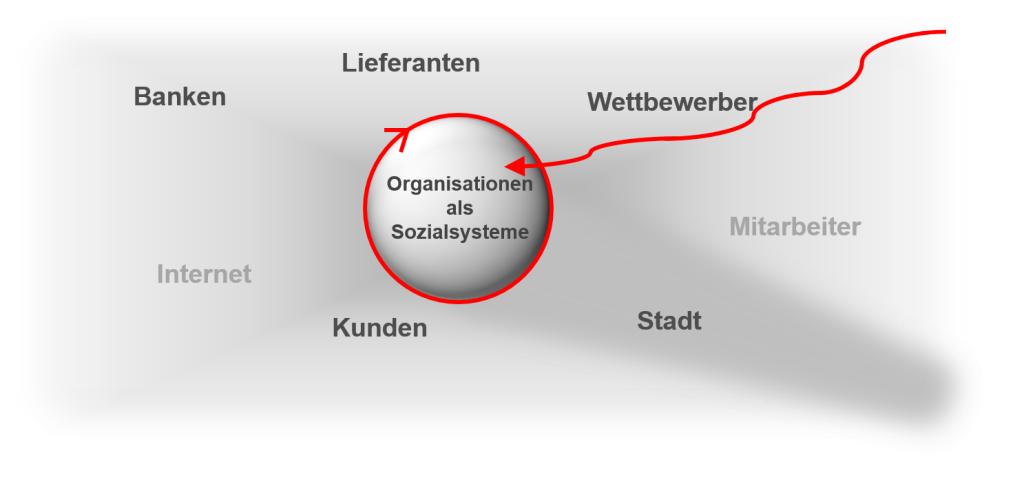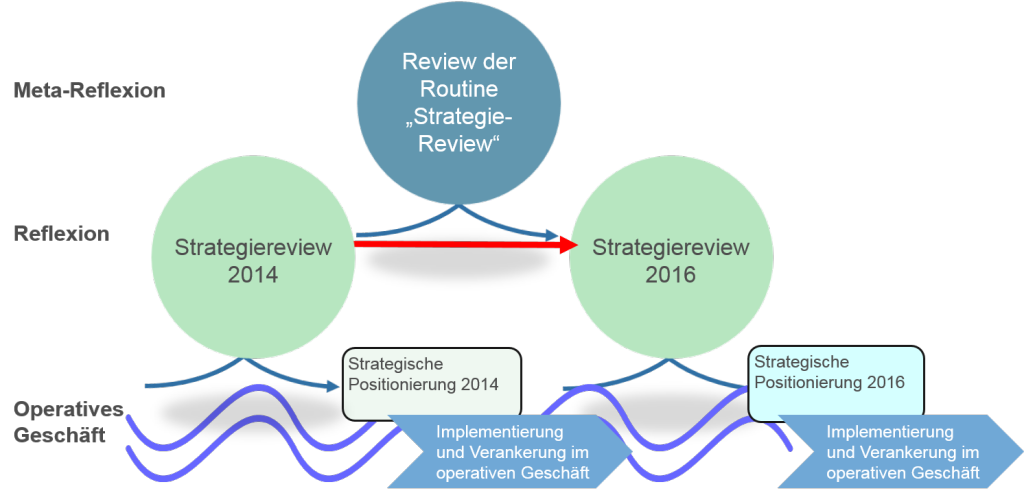Organizations are operatively closed and cognitively open to their environment
What are the implications for the management?
Since an organization’s environment typically has a cumulatively higher complexity than can be displayed within its own organizational structure, organizations need to reduce complexity by selecting relevant environments, thereby allowing them to remain stable and active systems. It is the responsibility of the management to ensure that relevant information is carried in from the outside and effectively contributes to the communication and decision processes.
Organizations are complex social systems
Is it possible to steer a social system?
With regards to cause-and-effect chains, it is impossible to directly influence social systems. Organization can be irritated by their relevant environments, but they cannot be directly forced to adapt. Social systems use their boundaries to provide themselves with a certain amount of irritations, which can – but do not have to – provide impulses for the development of internal structures. When trying to directly steer organizations, thereby intervening in a running system, surprises are to be expected. Organizations cannot be directly controlled. They can only be indirectly changed through recursive leadership processes – through observations and their evaluations as well as from impulses derived from these considerations.
Organizations do not see what they do not see
How can blind spots be reduced?
Current observation and evaluation patterns are the result of an organization’s past learning and survival process . “This self-confirmation process of observing through the results of these very observations leads to an internal buildup of stable meanings within the organization. The process concentrates situational judgments into solid patterns of explanation and interpretation, which cannot be easily challenged later, even in light of diverging experiences.“ (Wimmer, 1999) This mechanism can only be interrupted through successful irritations via structural coupling in which the irritations are perceived as relevant and therefore stimulate structural change.
Organizations have to invent their own future
How is this possible?
The future is and always will be uncertain. The calculability and predictability paradigm is continuously dissolving. Based on the assumption of a common trend, companies need to develop and agree upon an action plan for future adaptation through change. Furthermore, companies need to develop routines to constantly scrutinize and adapt their action plan based on observable developments in both the market and the broader organizational environment.
Three relevant core questions:
- How can an organization supply itself with more variation, thereby allowing it to identify opportunities?
- How can variations be identified from the input of the selection process?
- How can inter-organizational resistance against innovation be reduced in order to enable successful implementation?
The concept of forward-looking self-renewal
How can it be realized?
Environmental conditions change quickly. Markets become increasingly volatile. Unless specifically empowered, organizations struggle to keep up the pace of necessary adaptation. This is where the notion of forward-looking self-renewal becomes important. As a concept for intervention, this utilizes both basic organization specific assumptions as well as the design dimensions inherent to the theory of self-developing systems.
The target is therefore to further develop the evolutionary processes already existing within organizations: variation, selection, re-stabilization. The influence from the variation mechanism provides the organization with a bigger pool of potential development impulses. These makes up the necessary foundation to decide whether there are sufficient reasons to seriously change the organization, or if the status quo should be maintained (change vs. continuation). To refine the selection mechanism means to empower the leadership system, thereby enabling it to effectively observe both the organization and its environment in order to identify the innovations to be used for the further development of the organization. This leadership process requires communication. Re-stabilization addresses the task of transforming the change impulses into stable, established processing routines.
Do you want to learn more?
Do you want to learn more about the topic? Please fill out the following contact form to receive further information or schedule a free, personal online dialog to see our references and practical examples of our current projects.
Error: Contact form not found.
Source:
Wimmer, R. (1999): Wozu benötigen wir Berater? Ein Orientierungsversuch aus Systemischer Sicht. In Achatzi H. J., Benkert, W. & Walger, G. Formen der Unternehmensberatung. Köln: Otto-Schmidt Verlag.



